Ruellia s. l.
Erin Tripp


This tree diagram shows the relationships between several groups of organisms.
The root of the current tree connects the organisms featured in this tree to their containing group and the rest of the Tree of Life. The basal branching point in the tree represents the ancestor of the other groups in the tree. This ancestor diversified over time into several descendent subgroups, which are represented as internal nodes and terminal taxa to the right.

You can click on the root to travel down the Tree of Life all the way to the root of all Life, and you can click on the names of descendent subgroups to travel up the Tree of Life all the way to individual species.
For more information on ToL tree formatting, please see Interpreting the Tree or Classification. To learn more about phylogenetic trees, please visit our Phylogenetic Biology pages.
close boxIntroduction
Ruellia is a large genus of ca. 300 species. Mexico and Brazil are centers of diversity, but the genus is common elsewhere throughout the neotropics, Madagascar, and mainland Africa. A few species also occur in southeast Asia, Australia, and temperate regions of North America and South America.
Recent molecular work (E. Tripp, in press) indicates Ruellia is monophyletic, though bootstrap support is weak, and early diverging lineages are poorly resolved. Ruellia s. l. encompasses a small number of related genera: Blechum, Eusiphon, and Polylychnis. Old World species form a basal grade, and New World taxa are monophyletic and nested within this grade. The New World clade is composed of several lineages, three of them quite large in size (Euruellia, Physiruellia, and Ebracteolate), and six somewhat smaller in size (the Ruellia inundata, R. inflata, R. jaliscana, R. humilis, R. harveyana and Blechum clades). Floral morphology is diverse within Ruellia. Putatitve pollination syndromes (e. g. bee, hummingbird, bat, hawkmoth) have evolved multiple times suggesting that pollinators have played an important role in the overall diversification of the genus. Pollen morphology (3-porate, spheroidal, coarsely reticulate) represents perhaps the best-known synapomorphy for the genus. Also, a haploid chromosome count of x = 17 has been found for nearly all Ruellia species (over 50 spp.; Daniel & Chuang 1998).

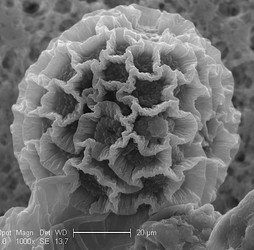
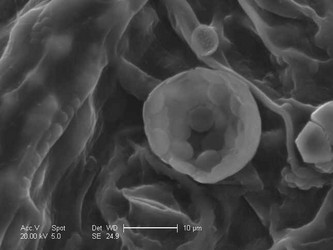
Left: SEM of Ruellia petiolaris pollen. Right: SEM of Ruellia norvegigratiosa leaf glands. Images © Erin Tripp.
Species of Ruellia can be found in a wide variety of habitats including understory rainforest, desert, swamp, tropical montane, and temperate grassland environments. Most are herbaceous but some are shrubs, small trees, or lianas. A majority of species of Ruellia produce cleistogamous flowers in addition to open (chasmogamous) flowers. The seeds of Ruellia, like other Ruellieae, are covered by hygroscopic trichomes that become mucilaginous when wet. These traits aid in successful reproduction and dispersal, and may help explain the widespread distribution of the genus. Several species of Ruellia are ornamentals, and others have been noted for their local, medicinal uses (e. g., for the treatment of headaches, dizziness, used to make teas, eye drops, and leaves smoked to induce hallucinations; see Daniel 2004 and Wasshausen 2005).
Many (if not most) species of Ruellia possess sessile, inconspicuous leaf glands. These are generally only visible with a dissecting scope. Despite their commonality, these glands have never been systematically studied. It is also not known whether similar structures occur in other, closely related genera. Published images of these glands can be seen in Ezcurra (1993), Daniel (1990), and McDade & Tripp (in press), as well as in the above photo. Research is needed to determine the taxonomic breadth, morphological diversity, and perhaps functional significance of these glands.
References
Daniel, T. F. & T. I. Chuang. 1993. Chromosome numbers of New World Acanthaceae. Syst. Bot. 18: 283-289.
Daniel, T. F. and T. I. Chuang. 1998. Chromosome number of cultivated Acanthaceae and systematic implications. Pp. 309-330 In: Mathew P., Sivadasan M. (eds.) Diversity and taxonomy of tropical flowering plants. Mentor Books. Calicut, India.
Daniel, T. F. 2004. Acanthaceae of Sonora: Taxonomy and Phytogeography. Proc. Cal. Acad. Sci. 55(4): 690-805.
Ezcurra, C. 1993. Systematics of Ruellia (Acanthaceae) in southern South America. Ann. Mo. Bot. Gard. 80: 787-845.
Grant, W. F. 1955. A cytogenetic study of Acanthaceae of Thailand. Brittonia. 8: 121-149.
McDade, L. A. and E. A. Tripp. Synopsis of Costa Rican Ruellia L. (Acanthaceae): New species, taxonomic concepts, a country record, range extensions, and identification aids to the 22 species known from the country. Brittonia, in press.
Tripp, E. A. Evolutionary relationships within the species-rich genus Ruellia (Acanthaceae). Systematic Botany, in press.
Wasshausen, D. C. 2005. Chapter 5.6 Acanthus: Family Acanthaceae. Pp. 112-114. In: G. A. Krupnick and W. J. Kress (eds.). Plant conservation: A natural history approach. University of Chicago Press, Chicago.
Title Illustrations

| Scientific Name | Ruellia affinis Lindau |
|---|---|
| Location | Duke Greenhouses |
| Reference | Duke Greenhouses |
| Specimen Condition | Live Specimen |
| Copyright |
© 2006

|
| Scientific Name | Ruellia cf. lactea Cav. |
|---|---|
| Location | Estado de Mexico |
| Specimen Condition | Live Specimen |
| Identified By | Erin A. Tripp & Tom Daniel |
| Collector | Tripp, Acosta, & Blanco |
| Copyright |
©

|
| Scientific Name | Ruellia bourgaei Hemsl. |
|---|---|
| Location | Ixtlahuacán del Río, Jalisco, Mexico |
| Specimen Condition | Live Specimen |
| Identified By | E. Tripp |
| Life Cycle Stage | Flowering |
| Body Part | Flower and Habit |
| Collection | Ruellia bourgaei Hemsl. |
| Collector | P.C. Reyes |
| Copyright | © 2001 |
About This Page

Rancho Santa Ana Botanic Garden
Correspondence regarding this page should be directed to Erin Tripp at
Page copyright © 2007
All Rights Reserved.
- First online 13 November 2006
- Content changed 10 April 2007
Citing this page:
Tripp, Erin. 2007. Ruellia s. l.. Version 10 April 2007 (under construction). http://tolweb.org/Ruellia_s._l./65583/2007.04.10 in The Tree of Life Web Project, http://tolweb.org/




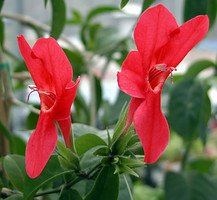
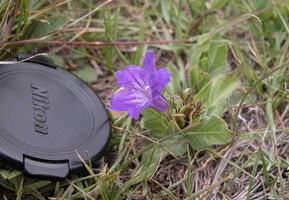
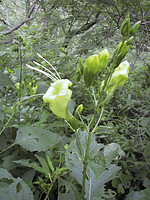
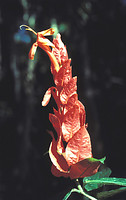
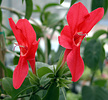
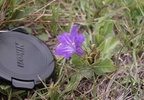



 Go to quick links
Go to quick search
Go to navigation for this section of the ToL site
Go to detailed links for the ToL site
Go to quick links
Go to quick search
Go to navigation for this section of the ToL site
Go to detailed links for the ToL site